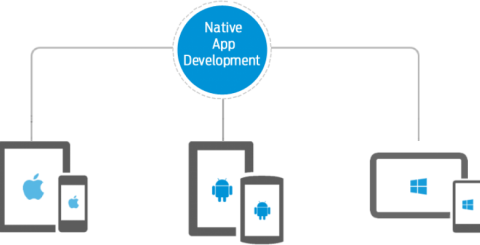React Native vs. Native App Development — Pros and Cons for Business

React Native is a unique software which designs apps using JavaScript. Its use of JavaScript allows it to develop apps for both iOS and Android. React Native was developed by Facebook in March 2013. By providing the ability to make a code which works on both systems, React Native enables ios and android app development through the use of a single code. Thus, you no longer have to code separately for iOS and Android, which makes the process easy and time-saving. React Native's prospects for business usage have been widely acknowledged. What makes React Native unique? Is React Native suitable for your business? Does it outsmart previous app development software? Should we use it for the development of all kinds of apps?
React Native is fun
If you have come from a native iOS or Android background, you would have realized its powers. Creating an app is super easy & uncomplicated. However, its equally easy to screw your app and make it slow and laggy — especially if you have a large app with complex architecture, state management, deeply nested components.
Even on a complex app, achieving 60 fps with React Native isn’t a rocket science. In this article, I’ll be sharing common pitfalls that lead to a slow & janky app and ways you can avoid it.
React Native's Secret
The industry, for many years prior to the release of React Native, was struggling to find a framework which allowed for the development of a multiplatform app. One had to go through the strenuous activity of having to code separately for multiple platforms. With the advent of React Native, there were hopes of a less entangled future of ios and android app development.
Previously, when coding was restricted to computers and smartphones were nonexistent, the web browser of any computer was the place where all different kinds of functions could be performed. There was no obstacle in the way of web development because there was a single software uniform across all computers.
On the other hand, with the advent of the smartphone, the coding industry took a very different route. Since there were various companies coming up with their newest phones, all of them had a platform which was unique only to the specific company. Cross-platform app development was not a reality. One had to make a different interface for apps depending on the company. For instance, Nokia used Symbian while on the other hand, Apple used iOS and Samsung, Sony and others used Android. However, making different apps for different platforms was not a very efficient method.
With the emergence of React Native, the reality of a multiplatform app was in the sights. React Native allowed for the development of multiplatform apps without comprising on quality and speed. However, like the development of any app, the success of it largely depends on the amount of effort the creator puts in Apps don't just appear out of thin air.
Which one is better React Native or native?
The availability of either of these two frameworks depends upon on the kind of project being made. lf, for instance, the project is restricted to either only iOS or only Android, then it doesn't make sense for the development to be done on React Native. For that purpose, any app development software could be used If, on the other hand, the project requires that an app is developed for both iOS and Android, then that is where the role of React Native comes in.
The presence of React Native allows for us the possibility of going beyond boundaries with our apps. One no longer has to worry about going through the trouble of having to do the task separately depending on the platform. Thus, while it may not be understood yet, React Native is a game changer.
Similar Articles
Every business launch is exciting, but it also has its challenges, such as decision-making regarding the selection of proper tools for business processes. It is also a reality that today, no startup can lack software solutions when it comes to business organization and performance.
The education industry is not left behind by the new digital world shift. E-learning has received much consideration with the help of technological factors coupled with the ever-increasing demand for convenience and personalization
Managing a wide range of assets, from IT equipment to digital resources, can be overwhelming without the right tools. Businesses often struggle with asset mismanagement, leading to delays, unexpected costs, and compliance issues.
E-learning has become a quintessential wave through which learners access education in today’s te
Are you tired of keeping up with regulatory requirements and managing risk, which can feel like navigating a labyrinth? Organizations across industries face mounting pressure to maintain compliance while simultaneously driving growth and innovation.
Anyone even vaguely familiar with today's fast-paced digital world would know that e-commerce businesses face intense pressure. Pressure to deliver exceptional customer experiences while also maximizing their profits. To achieve this delicate balance, companies operating in this space must now put the power of technology to work
Intelligent technology-driven solutions are now guiding industries across all sectors. Innovative and disruptive technologies like Artificial Intelligence (AI) and Machine Learning (ML) are driving these changes, which play a crucial role in designing and developing intelligent solutions.
The introduction of Artificial intelligence (AI) healthcare has caused a radical change in the way that medical care is provided. It gains paramount importance when it comes to customised treatment regimens.
Graphical presentation of data and information in visual formats like charts, maps, and graphs is termed data visualization. This method makes complex data more accessible and easily understandable bringing out the trends and patterns from raw data, which can be used to significantly enhance customer experience









